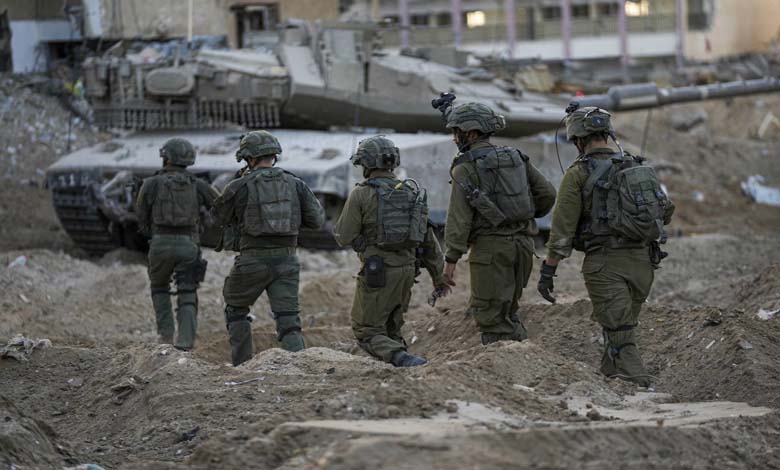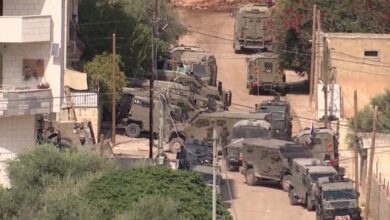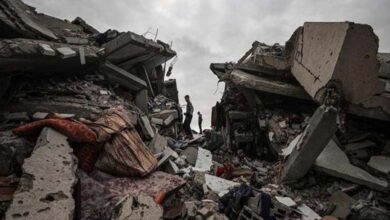Occupation of Gaza Plan… Israeli Estimates Suggest Fighting Could Last Until 2026

Israeli military assessments indicate that clashes, as part of a deep ground invasion into the Gaza Strip, could extend until 2026.
According to Yedioth Ahronoth, based on the initial framework set by Chief of Staff Eyal Zamir and following approval of the “central idea” for occupying Gaza, between 80,000 and 100,000 reserve soldiers would be called up to participate in the large-scale operation – an initiative that had previously faced opposition in the cabinet.
-
Gaza Sparks a Civil Servants’ Revolt in the European Union
-
How the Muslim Brotherhood Serves Netanyahu Under the Guise of Solidarity with Gaza
The paper notes that further discussions are scheduled in the coming days regarding the operational agenda: the nature of the campaign, urban maneuvering methods, actions targeting high-rise buildings in the west of the city, and measures against resistance teams carrying out Hamas operations.
After Zamir approved the “central idea” on Wednesday to occupy Gaza City in the north of the Strip – a decision made by the small political-security cabinet – additional talks on the matter are expected next week.
-
The Kissufim Truck Overturn: Death Beneath the Wheels of Hunger in Gaza
-
“I collected my son’s remains from the streets” – A mother’s cry in Gaza as Netanyahu hints at escalation
The initial plan drafted by Zamir foresees the mobilization of between 80,000 and 100,000 reservists in the Eighth Brigade. Senior Israeli military officials will later discuss the exact nature of the operations and maneuver strategies before presenting the plans to the cabinet for approval, then initiating preparations within the participating divisions and brigades.
Final troop numbers will be determined later, but additional maneuvers in Gaza and the northern Strip – particularly against high-rise buildings in the city’s west and Hamas combat cells – are expected to continue until 2026.
-
From the Battlefield to the Therapist’s Office: Gaza Haunts Israeli Soldiers Without Firing a Bullet
-
Diaries of a Gaza family: waking up hungry and sleeping on broken hope
The newspaper states that Zamir’s approval came two days ahead of schedule following a meeting with the General Staff, representatives of the Shin Bet security service, and other commanders. The army reported that during the meeting, it reviewed operations conducted so far, including an offensive launched two days ago in the Zeitoun neighborhood.
Earlier this week, even before Zamir approved the initial framework, the Israeli army had stressed that such a move would be impossible without mobilizing reservists. “We will certainly recruit them,” it stated. “The question is not whether we will do it, but how many. The focus is not solely on Gaza, considering the harvest season in the West Bank this autumn. We will also take into account the holiday period and present several alternatives depending on the chosen methods, to be finalized later.”
-
Hungry in Gaza: When Chaos Devours the Loaf of Life
-
Gaza’s Humanitarian Crisis Shifts Western Diplomacy Toward Recognizing Palestine
During a cabinet meeting last week, the Chief of Staff warned against any move to fully occupy the Strip. While he confirmed he would follow political directives, he voiced his opposition to such a scenario, suggesting instead a siege strategy.
Meanwhile, tensions escalated this week between Defense Minister Yoav Gallant and Zamir. The minister attacked the Chief of Staff over the upcoming reshuffle in army appointments, claiming the discussions had taken place “in violation of instructions” and that he had no intention of reviewing or approving the published nominations.
-
Worst-case famine scenario: UN report warns of humanitarian catastrophe in Gaza
-
What Is the Fate of the Gaza Truce? Hamas Responds to Witkoff
An army spokesperson responded that appointments are decided by the Chief of Staff before being submitted to the minister for approval, which the minister may grant or reject.
Against this backdrop, the minister accused the Chief of Staff yesterday of “unnecessarily harming IDF officers” and attempting to “impose facts on the ground” outside standard procedures, suggesting this approach might be influenced by “a group of advisors hostile to the government.”
He insisted on maintaining a prior consultation mechanism between himself and the Chief of Staff, emphasizing that it should take place “in an orderly manner and through prior discussions, as has been the case since I assumed the position of Defense Minister.”












